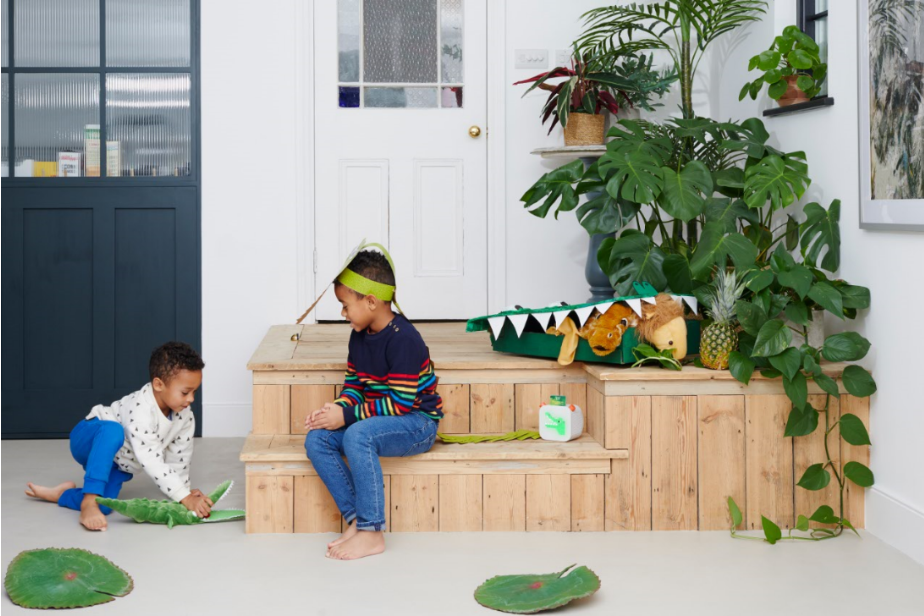
Kids love to explore the world around them. They’re endlessly curious, and every experience is an opportunity for discovery and learning. Will it be easier to walk if I hold onto this couch? What will happen if I pull the cat’s tail? (Ouch!) Each new activity can teach kids something about their world, and that’s why learning and play go so well together—with a little imagination, almost everything is a chance to learn, and almost anything is an excuse to play.
At my company, Yoto, we’ve been inspired by the principals of Maria Montessori which are based largely on learning through independent decision-making, through tactile play, and by building relationships with our environments. In that spirit, here are some fun activities for your kids that they may not realize are also educational.
1. Sorting Activities: Sorting play is as simple as it sounds: it encourages kids to see or feel the differences in objects, and group them together based on similarities. This helps children engage critically with the world around them, and can be a fun way to introduce new concepts by hiding them within familiar activities. Try teaching younger kids about shapes and colors by having them sort similar objects into piles, baskets or buckets. Start with two categories, for example, a mix of yellow objects and blue objects, and have your little ones sort them based on color. Using some of their favorite toys can make this even more fun!
For older kids, sorting activities are a terrific gateway to math. Begin with the simple addition or subtraction of objects, and then increase the complexity by exploring division and multiplication: if 4 friends have 12 green marbles and 8 red marbles, how will we divide these equally so that each child has the same collection of marbles?
Sorting activities take many forms and are only limited by your imagination. You might explore objects that are hot and cold, big and small, solid and see-through, or rough and smooth. Your kids will enjoy the tactile nature of sorting play, particularly if they (like many kids these days) are spending a lot of time using screens.
2. Phonics Games: Phonics is the foundation for written and spoken language. They are primarily concerned with connecting written language with spoken sounds, but can also include rhythm, rhyme and identifying environmental sounds. This is crucial for developing reading skills, as well as giving kids more confidence in their own voice. With a little imagination, there’s tons of fun to be had with phonics!
Try playing “I Spy” using phonics instead of letters! For example, if your chosen subject is the family dog, you might say “I spy, with my little eye, something beginning with ‘Duh’. This is an easy game to play at home or in the car.
Why not adapt a classic game of hopscotch for some phonics fun? Draw out a hopscotch grid in chalk and label each square with a phonic syllable, for example: “Duh”, “Cuh”, “Buh”, “Mm”. Roll a die and have your kids hop that many squares, naming a word for each syllable as they go: “Dog”, “Cat”, “Boat”, “Mouse”. Alternatively, have them hop their way to one square and name as many words as they can for that square: “Cuh… Cat, cow, can, couch, call, cost.”
Phonics is a fun way to make reading fun for kids. You’ll be amazed at how much confidence kids will gain when they start sounding out the words in their favorite books.
3. Scavenger & Treasure Hunts: Everyone loves a good scavenger or treasure hunt, and many kids request these as fun activities on birthdays or at Easter. That makes them the perfect vehicle for teaching kids new things.
Older kids might be curious about science or nature—animals, dinosaurs or outer space make great subjects for a scavenger hunt! Hide a series of interesting facts around your house, backyard or local park, and have the kids follow a clue sheet to find them. Reward correct answers with a treat, a gold star, or with the next clue—maybe there’s a themed prize at the end of the hunt!
For younger kids, an alphabet scavenger hunt can help them relate letters to the objects in their daily lives. Give them an alphabet sheet and help them to find objects around your house and garden which begin with each letter: apple, bear, car, dress, etc. If they’re old enough, try having them write each of the words out at the end to practice their spelling. Scavenger hunts are a lot of fun, and can be structured however you like. Plus, they’re a great way to encourage kids to work together as a team.
4. Float or Sink: This is the perfect excuse to splash about in the backyard on a hot day! Fill a clear container with water—a bucket or jug is great, or a kiddie pool if you have one—and collect an assortment of different objects from around your home. Label two additional buckets “Float” and “Sink” respectively, and then the fun begins. Have your kids drop each item into the water to see if it floats or sinks, and then place each item into its respective bucket. Using tongs or tweezers can help develop your children’s fine motor skills. This is a great self-directed play, and your kids will love rushing about the house finding new objects to test. This summer, Float or Sink can get you and the little ones out of the house and into the backyard, or bring some educational fun to your bath time routine.
